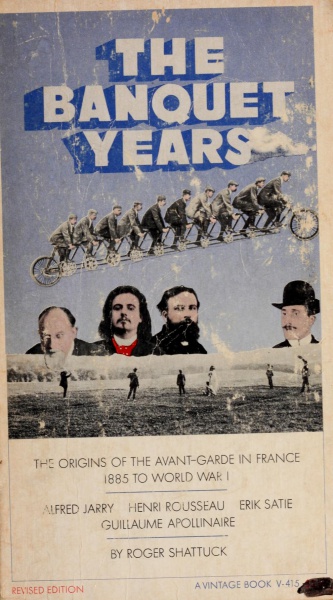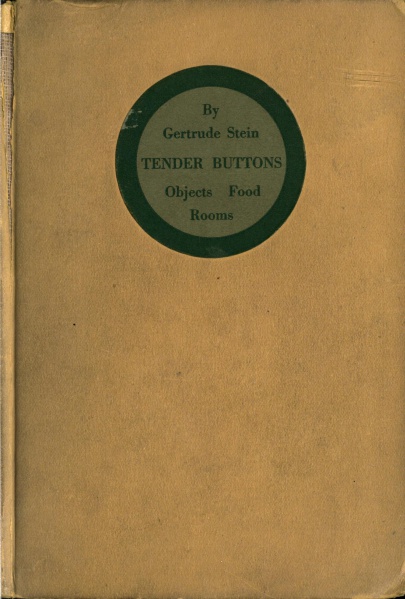Tony Robbin: Shadows of Reality: The Fourth Dimension in Relativity, Cubism, and Modern Thought (2006)
Filed under book | Tags: · art, art history, cubism, geometry, mathematics

“In this insightful book, which is a revisionist math history as well as a revisionist art history, Tony Robbin, well known for his innovative computer visualizations of hyperspace, investigates different models of the fourth dimension and how these are applied in art and physics. Robbin explores the distinction between the slicing, or Flatland, model and the projection, or shadow, model. He compares the history of these two models and their uses and misuses in popular discussions. Robbin breaks new ground with his original argument that Picasso used the projection model to invent cubism, and that Minkowski had four-dimensional projective geometry in mind when he structured special relativity. The discussion is brought to the present with an exposition of the projection model in the most creative ideas about space in contemporary mathematics such as twisters, quasicrystals, and quantum topology. Robbin clarifies these esoteric concepts with understandable drawings and diagrams.
Robbin proposes that the powerful role of projective geometry in the development of current mathematical ideas has been long overlooked and that our attachment to the slicing model is essentially a conceptual block that hinders progress in understanding contemporary models of spacetime. He offers a fascinating review of how projective ideas are the source of some of today’s most exciting developments in art, math, physics, and computer visualization.”
Publisher Yale University Press, 2006
ISBN 0300110391, 9780300110395
160 pages
Review (Tony Philips, Notices of the AMS, 2007)
Review (Amy Ione, Leonardo, 2006)
Author (with an Hypercube Android App and online references)
Publisher
PDF (some images missing)
Comment (0)Roger Shattuck: The Banquet Years: The Origins of the Avant-Garde in France, 1885 to World War I., Rev. ed. (1955/1968)
Filed under book | Tags: · 1880s, 1890s, 1900s, 1910s, absurd, anarchism, art, art history, avant-garde, cubism, dada, dreams, france, literature, logic, montage, music history, painting, pataphysics, poetry, theatre, typography

In this book Roger Shattuck portrays the cultural bohemia of turn-of-the-century Paris who carried the arts into a period of renewal and accomplishment, and laid the ground-work for Dada and Surrealism.
“…Then came the idea–a kind of gambler’s hunch–that the trio Rousseau-Satie-Apollinaire represented several significant aspects of the period and could reveal them better than any single figure. The idea would not die. [..] Jarry had forced his way into the group and established himself close to the center of things. He helped clarify my underlying subject: how the fluid state known as bohemia, a cultural underground smacking of failure and fraud, crystallized for a few decades into a self-conscious avant-garde that carried the arts into a period of astonishingly varied renewal and accomplishment. [..] An enormous amount has been written on this era and these men since the first edition of this book in 1958. I have taken account of some of it by changing those passages where new facts have come to light.” (from the Preface to this edition)
First published in 1955
Publisher Vintage Books, 1968
397 pages
Review (Alfred Kazin, The Reporter, 1958)
Review (Sidney Tillim, College Art Journal, 1959)
Review (Justin O’Brien, The Saturday Review, 1958)
PDF (115 MB, no OCR)
Comment (0)Gertrude Stein: Tender Buttons: Objects, Food, Rooms (1914–) [EN, PT]
Filed under poetry | Tags: · cubism, poetry

A seminal text in the history of poetry and poetics, Tender Buttons was originally published in 1914 and is considered one of the great Modern experiments in verse. At one time or another it has been thought of as a masterpiece of Cubism, a modernist triumph, a spectacular failure, a collection of confusing gibberish, and an intentional hoax. It is the second published work of Stein. (from a BookThug blurb)
Publisher Claire Marie, New York, 1914
78 pages
Tender Buttons (English, Claire Marie, 1914, no OCR, via Archive.org)
Tender Buttons (English, from Transition magazine, 1928)
Tender Buttons (English, from Stein’s Selected Writings, 1946)
Tender Buttons (English, Dover, 1997, no OCR)
Tender Buttons (English, Project Gutenberg, 2005, HTML)
Tenros Botões (Portuguese, trans. Luci Collin, 2013)

